Use Android operating system on Windows Mobile Phone
TipsMake.com - You are the favorite of the unique features of the Android mobile operating system but your phone is using Windows Mobile or not compatible? Need to buy another phone to use Android? In fact, many Windows Mobile phones can still install Android, many of us don't know. In the following article, TipsMake.com will introduce to you how, and the phone models needed for application with Android.
Update: This article was written from 2010 (6 years ago), so this approach no longer works on modern phones. Readers can still run Android on Windows Mobile phones but currently TipsMake.com does not have a good solution to provide you to read in this case. You can try the way in the article, but the writer is not sure about the level of success.

Instructions for installing Android
To do this, you'll need a microSD card (not SDHC - usually less than 2GB), and Windows Mobile support (see details below). You can check if the microSD card is compatible by looking at the label labeled HC:

The microSD card needs to be formatted in FAT32 format. Connect the memory card to your computer, right-click and choose format (you should back up all important data on the card if necessary):

After formatting, the next step in the installation process is to find the correct Android port for the phone (see details below), as well as the Android version you want to install. These versions start at 1.0 but usually we should find the right port for version 1.6 or 2.1.
When selecting the appropriate version, unzip the entire file using 7-zip:

After extracting, you will see an andboot folder, inside there will be another subdirectory called startup config or startup . Continue to open that folder, and navigate to the startup.txt file, and inside each folder there is a separate startup.txt file. Copy the file corresponding to your phone's model to the root of the andboot folder. This file has the task of 'notifying' Android about the phone's hardware information, such as screen size, RAM memory . so choosing the right file is important. If you are still wondering about the phone name or series, please refer to the document below for more details:
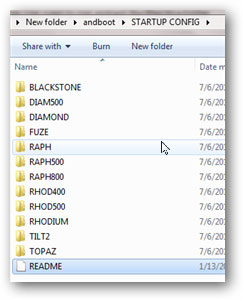
After transferring the correct file startup.txt to the andboot folder, copy the andboot folder to the newly formatted microSD card.
Then plug the microSD card back into the phone, open the file browser and point to the location of the memory card. Remember to plug the charger into the phone before continuing if not, or it may hang in the middle:
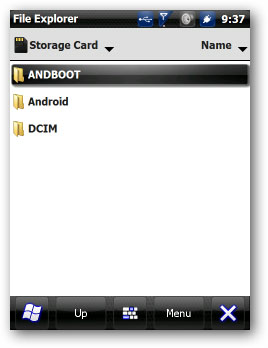
Open the andboot folder and run the haret.exe file. If the startup.txt file is properly copied and in the correct location in the andboot folder, simply press the Run button, a boot screen will appear when HaRET turns off Windows Mobile and starts Android:
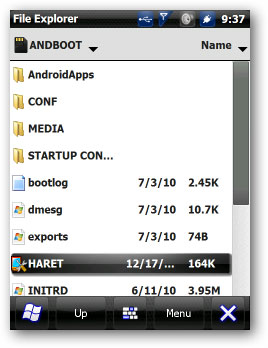
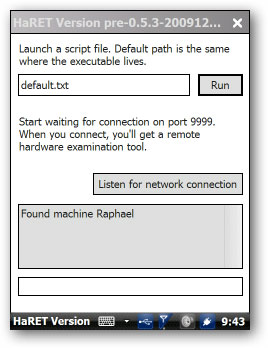
Please note that this first boot process will take longer than normal startup times, so be patient and pay attention to what is happening on the phone:
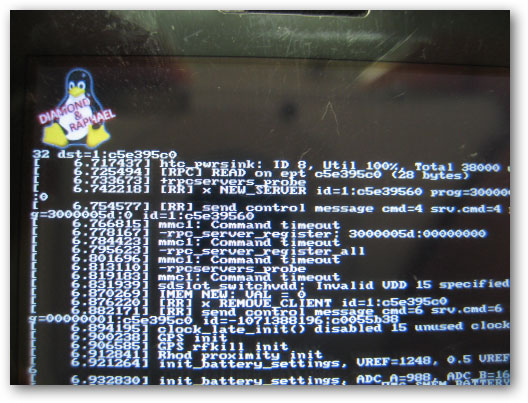
When this process is finished, the phone 'Android' will move to the familiar Welcome screen of any operating system, and your next job is extremely simple, just like when creating a new email account.
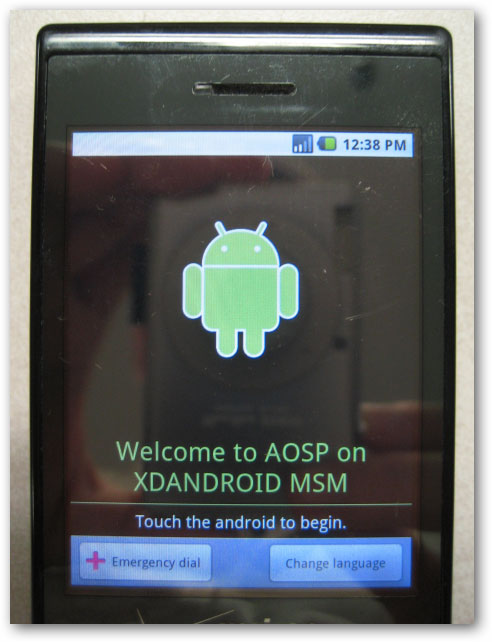
Typically, the operating system will need at least 10 minutes to integrate and synchronize data and information on the phone. When this process is finished, all system activity will return to normal, and you can start with installing the application. If you do not wait until the synchronization process above ends, the process of using later will encounter many obstacles such as hanging in the middle, not installing applications .:
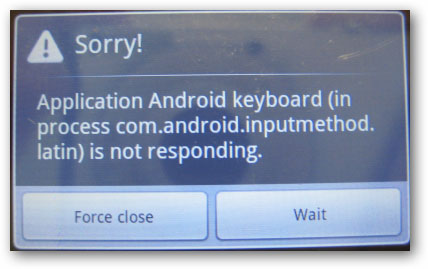
Change properties, set and install any application you want, and all will be stored directly on the memory card during the next startup. All Android phones from microSD cards will automatically return to Windows Mobile when you restart the device. To run Android, simply open the file browser and run the haret.exe file:
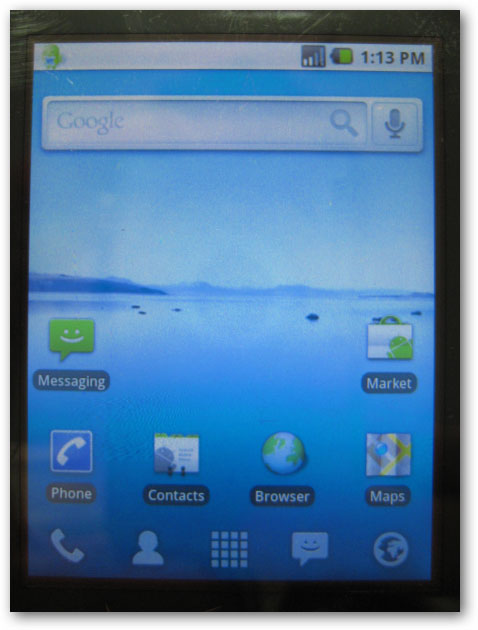
The Android port
In fact, there are a few different Android ports for Windows Mobile devices and each port only supports a certain line of devices, and each of those devices uses a variety of hardware configurations. But most advanced mobile devices today support touch screen, hardware button, cell phone radio, data connection and data sharing, but some ports do not support bluetooth, GPS or energy manager:

Most Android OS developers on phones using Windows Mobile began testing on the HTC Touch (most commonly HTC Vogue and Verizon xv6900). The HTC Touch series meets 100% of the common features but there are a few small applications that cannot be used with the original Windows Mobile ROMs. One of the main differences of Android for Touch and Android for other phones is that the Touch line allows Android to be 'flashed' directly to the phone's ROM (NAND memory). This is one of the turning points of Android developers with increasing battery life and significantly improved operating speed. Using Android on the Touch can still be applied by the way, but the developer recommends that users should flash the phone's NAND memory before running Android.
Android ports for HTC Touch have been used on the following phones with a huge success rate: HTC Nike (Neon), HTC Polaris (Touch Cruise), HTC Kaiser (TyTN II) and HTC Titan (Mogul, xv6800).
Note that HTC phones all have their own name code derived from HTC, and in many cases each company will name its product by brand and some other special identifiers. For example, HTC Titan is called Mogul on Sprint and xv6800 on Verizon. To find the right Android phone port, start by finding the HTC start code, you can learn more about all of HTC's product lines here.
Besides, XDAdroid supports most HTC Windows Mobile touch screen products, and if you have bought a similar phone in the past year, your device will be supported with maximum support. this port. XDAndroid runs directly on the phone via microSD card on the following phones: Touch Pro (Fuze, RAPH, RAPH800, RAPH500), Touch Diamond (DIAMOND, DIAM500), Touch HD (BLACKSTONE), GSM Touch Pro2 ( TILT2, RHODIUM, RHOD400, RHOD500), GSM Touch Diamond2 (TOPAZ).
On the other hand, Andromnia is the Android port for Samsung's phone devices. Currently these ports are still in the pre-alpha stage and communication devices such as headset speakers will not work. If you want, you can check out the support features on the following phone lines: Samsung i900 (GSM, global support), Samsung i910 (CDMA, used by Verizon in the US), Samsung i780 ( Mirage) and Samsung i907 (AT&T Epix).
Wing Linux is not as fast as XDAndroid but is a perfect replacement if your phone is not supported by any standard port. Wing Linux can support many models with different success rates: HTC Artemis, HTC Elf, HTC Elfin, HTC Excalibur, T-Mobile Dash, HTC Gene, HTC P3400, HTC Herald, T-Mobile Wing, HTC Opal, HTC Touch Viva, HTC Pharos, HTC Prophet, HTC Startrek, HTC Wizard and Asus P320, Galaxi Mini .
Good luck!
You should read it
- How to install Android Apk on Windows 10 phone
- How to fix Windows 10 not recognizing Android phone
- Top 20 tips on Windows Phone
- Android phone settings 'read' the name of the caller
- Backup and restore data on Windows Phone 8.1
- PUBG Mobile: Settings that give you better control over your phone
- How to Reset Network Settings on Android
- How is Microsoft turning Android into a mobile OS for Windows?
May be interested
- Windows Phone 8.1 will be updated in June
 june is the earliest time that windows phone fans receive the 8.1 update. however, microsoft may last until august if they are not ready.
june is the earliest time that windows phone fans receive the 8.1 update. however, microsoft may last until august if they are not ready. - 8 ultra-exclusive capabilities of Windows Phone 8 phones
 along with google's android, apple's ios, windows phone 8 is the most used mobile operating system today. although it has been around for a year, the microsoft operating system still has many mysterious possibilities that you may not know.
along with google's android, apple's ios, windows phone 8 is the most used mobile operating system today. although it has been around for a year, the microsoft operating system still has many mysterious possibilities that you may not know. - The announcement date of Windows Phone 8.1 has come very close
 good news for wp followers, the highly anticipated update of windows phone, called windows phone blue, or windows phone 8.1 will be announced at the microsoft build conference on april 2.
good news for wp followers, the highly anticipated update of windows phone, called windows phone blue, or windows phone 8.1 will be announced at the microsoft build conference on april 2. - Android history is fully expressed through short video
 android is the most pervasive operating system on every continent, installed on millions of smartphones, tablets, smart watches and many other devices around the world.
android is the most pervasive operating system on every continent, installed on millions of smartphones, tablets, smart watches and many other devices around the world. - HTC's Android 4.4.4 and Android L roadmap
 htc has just announced it will update android l for htc one m7 and htc one m8 within 90 days after google released the official version of this operating system. recently, news source llabtoofer posted a chart showing the software update schedule for htc phones.
htc has just announced it will update android l for htc one m7 and htc one m8 within 90 days after google released the official version of this operating system. recently, news source llabtoofer posted a chart showing the software update schedule for htc phones. - Successfully installed four versions of the operating system at the same time on a Windows Phone
 recently, a hacker with gustave m's twitter account posted a clip of a windows phone running four different operating systems, windows 10, windows 10 iot core edition, windows 8.1 and windows 10 mobile.
recently, a hacker with gustave m's twitter account posted a clip of a windows phone running four different operating systems, windows 10, windows 10 iot core edition, windows 8.1 and windows 10 mobile. - Android market share reached a record of over 80% in 3Q13
 mobile market share in the third quarter of 2013 still has no change in terms of rankings, but there are impressive numbers breaking records. and two guys do it, not everyone else is android and windows phone.
mobile market share in the third quarter of 2013 still has no change in terms of rankings, but there are impressive numbers breaking records. and two guys do it, not everyone else is android and windows phone. - Windows Phone is returning to a difficult time
 some experts recommend that microsoft should remove windows phone and switch to android. although this advice may sound absurd, but from a business perspective, it is quite accurate because up to now, windows phone has encountered many difficulties and worse than last year.
some experts recommend that microsoft should remove windows phone and switch to android. although this advice may sound absurd, but from a business perspective, it is quite accurate because up to now, windows phone has encountered many difficulties and worse than last year. - 8 features on Android 4.4 KitKat you may not know yet
 android 4.4 has been around for a while and it has also been pre-installed on new devices that are marketed. at the same time, many companies also started upgrading their old products to the operating system version. today i would like to share with you some mysterious features that may not be known to you on android 4.4.
android 4.4 has been around for a while and it has also been pre-installed on new devices that are marketed. at the same time, many companies also started upgrading their old products to the operating system version. today i would like to share with you some mysterious features that may not be known to you on android 4.4. - Windows Phone is backing to 'death door'
 market share slowed to below 3%, while microsoft focused on the low-end segment that could make windows phone situation worse.
market share slowed to below 3%, while microsoft focused on the low-end segment that could make windows phone situation worse.










 10 best Android apps
10 best Android apps Increase your Android phone battery life with JuiceDefender
Increase your Android phone battery life with JuiceDefender Save battery for Android phones by disabling 3G
Save battery for Android phones by disabling 3G Battery saving tips for Android phones
Battery saving tips for Android phones How to change the battery display percentage on iPhone
How to change the battery display percentage on iPhone